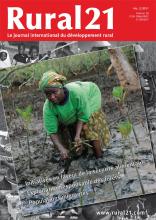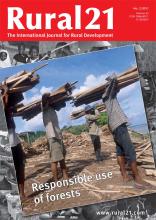Land Library
Bienvenido a la biblioteca de Land Portal. Explora nuestra amplia colección de recursos de acceso abierto (más de 74.000), que incluye informes, artículos de revistas científicas, trabajos de investigación, publicaciones revisadas por pares, documentos jurídicos, vídeos y mucho más.
/ library resources
Showing items 1 through 9 of 15.This summary assesses the gaps in the provision;understanding and implementation of laws/articles and their impact on women and VGs with respect to land use rights and provides a strategy to overcome these legal constraints that affect women and VGs land rights security..This resource was publish
This strategy assesses the gaps in the provision;understanding and implementation of laws/articles and their impact on women and vulnerable groups (VGs) with respect to land use rights and provides a strategy to overcome these legal constraints that affect women and VGs land rights security..This
This case study assesses how a new agricultural loan product is helping smallholder farmers to access loans by using their land use right as a guarantee..This resource was published in the frame of the Land Investment for Transformation (LIFT) Programme.
This study examines the reasons why landholders choose to formally or informally transact land use rights and provides recommendations on how to increase the number of households formally registering transactions..This resource was published in the frame of the Land Investment for Transformation
ELD is a joint initiative of Germany, the European Commission and the United Nations Convention to Combat Desertification (UNCCD). ELD offers a strong platform for raising public awareness of land degradation and advocating sustainable land-use strategies.
Soils around the world are degrading rapidly, reducing ecosystem diversity and some important functions, threatening food and other human securities, and increasing vulnerability to climate change. This is a vicious cycle created by and leading to further unsustainable land-use practices.
Les populations vivant aux alentours d’aires protégées doivent développer de nouveaux moyens de subsistance pour assurer leur survie. Les populations riveraines des forêts dépendent souvent de l’utilisation des produits et services que leur offrent les ressources naturelles.
The Congo Basin Forest Partnership aims to reconcile forest conservation with forest use. This article explains what a “policy network” of this sort can achieve and where its limits lie.
In rural areas of many developing countries fuelwood constitutes the only energy source – often with negative impacts on humans and the environment. Wise management and modern technology can guarantee a sustainable use of this valuable resource, as some examples from Latin America demonstrate.



